
Paul Gauguin Painting Reproductions 7 of 8
1848-1903
French Post-Impressionist Painter
183 Gauguin Paintings
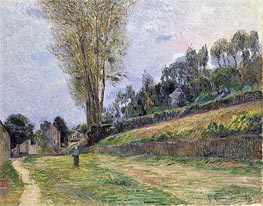
An Orchard under the Church of Bihorel 1884
Oil Painting
$797
$797
Canvas Print
$73.51
$73.51
SKU: GAP-13139
Paul Gauguin
Original Size: 73 x 92 cm
Thyssen-Bornemisza Museum, Madrid, Spain
Paul Gauguin
Original Size: 73 x 92 cm
Thyssen-Bornemisza Museum, Madrid, Spain

The Field of Derout-Lollichon 1886
Oil Painting
$916
$916
Canvas Print
$73.68
$73.68
SKU: GAP-13140
Paul Gauguin
Original Size: 59.3 x 92 cm
Los Angeles County Museum of Art, California, USA
Paul Gauguin
Original Size: 59.3 x 92 cm
Los Angeles County Museum of Art, California, USA
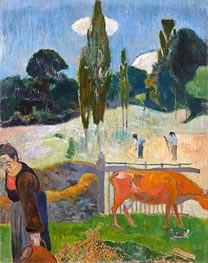
The Red Cow 1889
Oil Painting
$905
$905
Canvas Print
$73.85
$73.85
SKU: GAP-13141
Paul Gauguin
Original Size: 90.8 x 73 cm
Los Angeles County Museum of Art, California, USA
Paul Gauguin
Original Size: 90.8 x 73 cm
Los Angeles County Museum of Art, California, USA
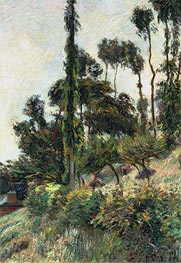
The Side of the Hill 1884
Oil Painting
$656
$656
Canvas Print
$64.67
$64.67
SKU: GAP-13142
Paul Gauguin
Original Size: 65 x 45.7 cm
Private Collection
Paul Gauguin
Original Size: 65 x 45.7 cm
Private Collection
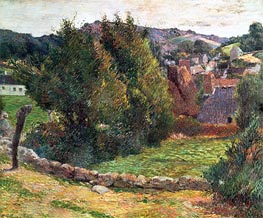
Landscape on the Pont-Aven 1886
Oil Painting
$936
$936
Canvas Print
$77.25
$77.25
SKU: GAP-13143
Paul Gauguin
Original Size: unknown
Private Collection
Paul Gauguin
Original Size: unknown
Private Collection
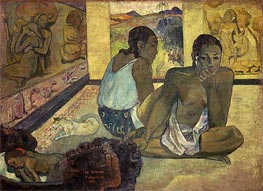
Te Rerioa (Day Dreaming) 1897
Oil Painting
$929
$929
Canvas Print
$67.04
$67.04
SKU: GAP-13144
Paul Gauguin
Original Size: 95.1 x 130.2 cm
Courtauld Institute of Art, London, UK
Paul Gauguin
Original Size: 95.1 x 130.2 cm
Courtauld Institute of Art, London, UK

Still Life with Profile of Laval 1886
Oil Painting
$758
$758
Canvas Print
$61.75
$61.75
SKU: GAP-13145
Paul Gauguin
Original Size: 46 x 38.1 cm
Indianapolis Museum of Art, Indiana, USA
Paul Gauguin
Original Size: 46 x 38.1 cm
Indianapolis Museum of Art, Indiana, USA
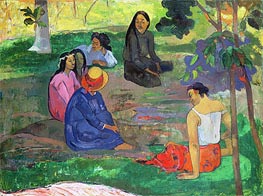
Les Parau Parau (The Gossipers) 1891
Oil Painting
$882
$882
Canvas Print
$69.76
$69.76
SKU: GAP-13146
Paul Gauguin
Original Size: 70.5 x 90.3 cm
The State Hermitage Museum, St. Petersburg, Russia
Paul Gauguin
Original Size: 70.5 x 90.3 cm
The State Hermitage Museum, St. Petersburg, Russia
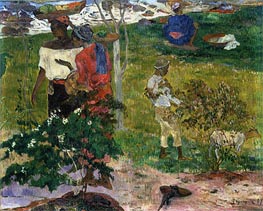
Tropical Conversation 1887
Oil Painting
$803
$803
Canvas Print
$75.04
$75.04
SKU: GAP-13147
Paul Gauguin
Original Size: 61 x 76 cm
Private Collection
Paul Gauguin
Original Size: 61 x 76 cm
Private Collection

Still Life with l'Esperance 1901
Oil Painting
$970
$970
Canvas Print
$79.97
$79.97
SKU: GAP-13148
Paul Gauguin
Original Size: unknown
Private Collection
Paul Gauguin
Original Size: unknown
Private Collection
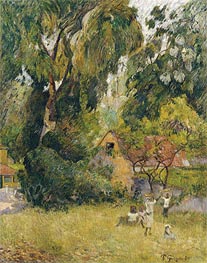
Huts under the Trees 1887
Oil Painting
$911
$911
Canvas Print
$73.68
$73.68
SKU: GAP-13149
Paul Gauguin
Original Size: unknown
Private Collection
Paul Gauguin
Original Size: unknown
Private Collection
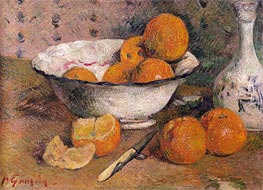
Still Life with Oranges 1881
Oil Painting
$600
$600
Canvas Print
$61.75
$61.75
SKU: GAP-13150
Paul Gauguin
Original Size: 33 x 46 cm
Musee des Beaux Arts, Rennes, France
Paul Gauguin
Original Size: 33 x 46 cm
Musee des Beaux Arts, Rennes, France
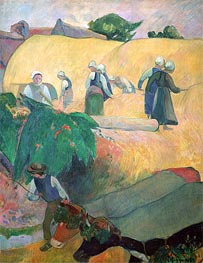
Haymaking 1889
Oil Painting
$936
$936
Canvas Print
$74.36
$74.36
SKU: GAP-13151
Paul Gauguin
Original Size: 92 x 73.3 cm
Courtauld Institute of Art, London, UK
Paul Gauguin
Original Size: 92 x 73.3 cm
Courtauld Institute of Art, London, UK

Man Picking Fruit from a Tree 1897
Oil Painting
$874
$874
Canvas Print
$75.04
$75.04
SKU: GAP-13152
Paul Gauguin
Original Size: 92 x 72 cm
The State Hermitage Museum, St. Petersburg, Russia
Paul Gauguin
Original Size: 92 x 72 cm
The State Hermitage Museum, St. Petersburg, Russia
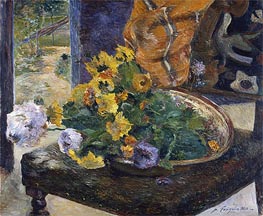
To Make a Bouquet 1880
Oil Painting
$758
$758
Canvas Print
$76.91
$76.91
SKU: GAP-13153
Paul Gauguin
Original Size: 54 x 65.1 cm
Private Collection
Paul Gauguin
Original Size: 54 x 65.1 cm
Private Collection

Landscape at Arles 1888
Oil Painting
$880
$880
Canvas Print
$73.51
$73.51
SKU: GAP-13154
Paul Gauguin
Original Size: 72.5 x 92 cm
National Museum, Stockholm, Sweden
Paul Gauguin
Original Size: 72.5 x 92 cm
National Museum, Stockholm, Sweden
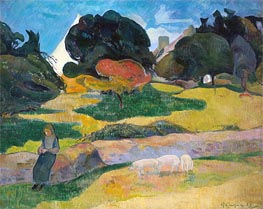
Girl Herding Pigs 1889
Oil Painting
$887
$887
Canvas Print
$74.19
$74.19
SKU: GAP-13155
Paul Gauguin
Original Size: 73 x 92 cm
Private Collection
Paul Gauguin
Original Size: 73 x 92 cm
Private Collection

Christmas Night (The Blessing of the Oxen) c.1902/03
Oil Painting
$865
$865
Canvas Print
$79.29
$79.29
SKU: GAP-13156
Paul Gauguin
Original Size: 70.9 x 82.6 cm
Indianapolis Museum of Art, Indiana, USA
Paul Gauguin
Original Size: 70.9 x 82.6 cm
Indianapolis Museum of Art, Indiana, USA
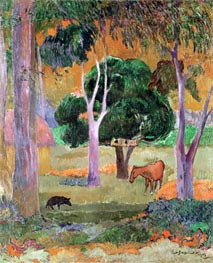
Dominican Landscape or, Landscape with a Pig and Horse 1903
Oil Painting
$638
$638
Canvas Print
$75.89
$75.89
SKU: GAP-13157
Paul Gauguin
Original Size: 75 x 65 cm
Finnish National Gallery, Helsinki, Finland
Paul Gauguin
Original Size: 75 x 65 cm
Finnish National Gallery, Helsinki, Finland
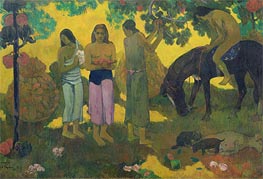
Rupe Rupe (Fruit Gathering) 1899
Oil Painting
$988
$988
Canvas Print
$63.47
$63.47
SKU: GAP-13158
Paul Gauguin
Original Size: 128 x 191 cm
Pushkin Museum of Fine Arts, Moscow, Russia
Paul Gauguin
Original Size: 128 x 191 cm
Pushkin Museum of Fine Arts, Moscow, Russia
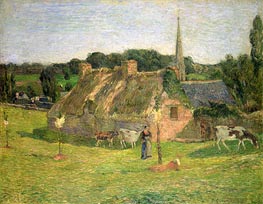
Lollichon's Field and the Church of Pont-Aven 1886
Oil Painting
$911
$911
Canvas Print
$72.32
$72.32
SKU: GAP-13159
Paul Gauguin
Original Size: 71.3 x 92 cm
Private Collection
Paul Gauguin
Original Size: 71.3 x 92 cm
Private Collection
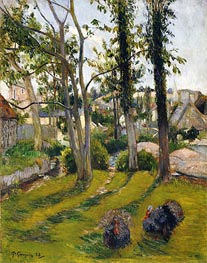
The Turkeys (Pont Aven Landscape) 1888
Oil Painting
$905
$905
Canvas Print
$73.68
$73.68
SKU: GAP-13160
Paul Gauguin
Original Size: unknown
Private Collection
Paul Gauguin
Original Size: unknown
Private Collection
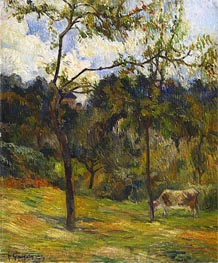
Normandy Landscape: Cow in a Meadow 1884
Oil Painting
$639
$639
Canvas Print
$79.50
$79.50
SKU: GAP-13161
Paul Gauguin
Original Size: 55.5 x 46.3 cm
Private Collection
Paul Gauguin
Original Size: 55.5 x 46.3 cm
Private Collection

Fatata te Miti (By the Sea) 1892
Oil Painting
$882
$882
Canvas Print
$69.76
$69.76
SKU: GAP-13162
Paul Gauguin
Original Size: 67.9 x 91.5 cm
National Gallery of Art, Washington, USA
Paul Gauguin
Original Size: 67.9 x 91.5 cm
National Gallery of Art, Washington, USA